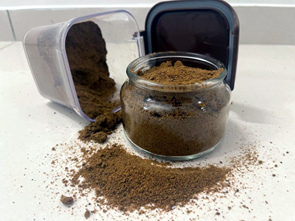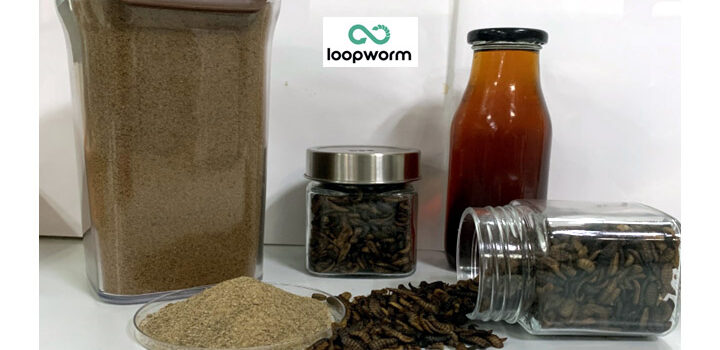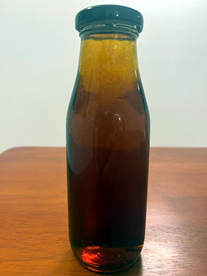Mr. Ankit Alok Bagaria, Co-Founder & CEO of Loopworm – a start-up working in the ‘Waste-to-Value’ biotechnology space, primarily focuses on upcycling the food industry by-products and organic waste to create sustainable food and feed for tomorrow.
 In an exclusive interview with Poultry TRENDS magazine, Mr. Ankit Alok Bagaria talks about insect-based protein and fats and how it can lead to better productivity in poultry farming.
In an exclusive interview with Poultry TRENDS magazine, Mr. Ankit Alok Bagaria talks about insect-based protein and fats and how it can lead to better productivity in poultry farming.
Excerpt of the interview are reproduced hereunder:

Brief Background:
Ankit has completed an Integrated Dual Degree (Bachelors + Masters Degree) from IIT Roorkee in 2019 from the department of Chemical Engineering. He started Loopworm straight away after passing out from IITR along with his batchmate, friend & Co-founder Abhi Gawri. He is the CEO and handles R&D strategy & Business Development in Loopworm.
What inspired you to start Loopworm?
Ankit: Abhi and I were always passionate about Agritech and Waste Management. While conceptualizing and ideating on the ways to upcycle organic byproducts, we come across an UN report stating that the Insects are the Future of Food & Feed which intrigued them.
The Report also stated that Insects love the climate which India offers, consume food waste & byproducts, and are a rich source of multiple biomolecules. This led us to Loopworm – Using worms to close the Loop of Food waste.
What is insect-based protein and fats? How can it lead to better productivity in poultry farming?
 Ankit: Defatted powdered Insects or insect meal is a protein concentrate which can be used as a premium quality ingredient in compound poultry feeds. It can effectively replace soybean meal or other protein meals in poultry diets and can lead to enhanced productivity, reduced mortality, and can help produce designer eggs. Insect fats can be used as a fat ingredient or as a palatability agent for Chickens & Birds.
Ankit: Defatted powdered Insects or insect meal is a protein concentrate which can be used as a premium quality ingredient in compound poultry feeds. It can effectively replace soybean meal or other protein meals in poultry diets and can lead to enhanced productivity, reduced mortality, and can help produce designer eggs. Insect fats can be used as a fat ingredient or as a palatability agent for Chickens & Birds.
Briefly describe the entire process.
Ankit: Loopworm breed Black Soldier Flies in a climate controlled indoor system which helps us with Insect eggs. Food waste is procured from food processing industries. The right amounts of food waste and baby insects are placed in crates stacked as a vertical farm. The grown-up insects are harvested, cleaned, sterilized and processed into the protein powder and fat oil.
How can the poultry industry implement the project?
Ankit: The Poultry industry needs to use compound feed with insect-based ingredients in it to implement the project. The feed manufacturers can check the efficiency and efficacy of the products at scaled up commercial farms to establish claims.
What is the environmental impact of this invention?
For every Kg of Protein powder produced 17 Kg of food waste is utilised, simultaneously creating 4 Kg of high-quality compost or insect frass as a byproduct. This basically is helping avert 40 Kg of GHGs per Kg insect protein concentrate. We use approx 200X less land and water in our process in comparison to Soybean protein meal.
Do you have any government support/ subsidy?
Ankit: Loopworm secured grants from the Ministry of Agriculture & Farmers welfare, Karnataka Government and Department of Biotechnology. Total grant amounts to INR 99 Lakhs. Loopworm were also supported by Tata Trusts and H&M Foundation.
For more details, visit Loopworm or email at info@loopworm.in
Related article: Insects: A Natural Nutrient Source For Poultry



 ultimately lesser farm mortality, better pecking behaviour, and more immunity. Moreover, with the correct use of insect-based ingredients, better Feed Conversion Ratio (FCR) & Egg productivity can be achieved.
ultimately lesser farm mortality, better pecking behaviour, and more immunity. Moreover, with the correct use of insect-based ingredients, better Feed Conversion Ratio (FCR) & Egg productivity can be achieved.

